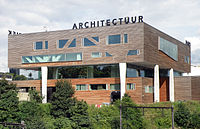File:Histoire des larmes (programmaboekje).pdf

Size of this JPG preview of this PDF file: 355 × 599 pixels. Other resolutions: 142 × 240 pixels | 284 × 480 pixels | 689 × 1,162 pixels.
Original file (689 × 1,162 pixels, file size: 656 KB, MIME type: application/pdf, 21 pages)
File information
Structured data
Captions
Captions
Add a one-line explanation of what this file represents
Summary edit
| DescriptionHistoire des larmes (programmaboekje).pdf |
Jan Fabre . Troubleyn - Histoire des larmes Nederlands: 'Wie gaat de geschiedenis van de tranen schrijven?', vroeg Roland Barthes in 'Fragments d'un discours d'amoureux'. In 'Histoire des larmes' wil Jan Fabre deze uitdaging aangaan. Sinds de jaren tachtig loopt een onverminderde fascinatie voor de mogelijkheden en betekenissen van het menselijk lichaam als een rode draad door zijn voorstellingen. Hij onderzoekt en ontrafelt daarin de vele cultureel en historisch gevormde lagen die ons lichaamsbeeld bepalen. In 2001 legde Jan Fabre met 'Je suis sang' de focus op lichaamsvochten en nam de binnenkant van het lichaam onder de loep. In 'Histoire des larmes' wordt deze lijn doorgetrokken. Met zijn ongebreidelde verbeelding en diepe bewondering en eerbied voor de Vlaamse schilderkunst werkt de duivelskunstenaar hier aan een iconografie van de tranen, die een concrete vorm geeft aan erg uiteenlopende emoties. In 'Histoire des larmes' verlegt Jan Fabre nogmaals consequent en onversaagd de grenzen van zijn buitengewone oeuvre, waarin de metamorfose centraal staat. Français : 'Qui écrira l'histoire des larmes', demande Roland Barthes dans 'Fragments d'un discours d'amoureux'. Dans 'Histoire des larmes', Jan Fabre veut relever le défi. Depuis les années quatre-vingts, une fascination intacte pour les possibilités et les significations du corps humain forme le fil rouge de ses représentations. Il y étudie et y décortique les multiples couches culturelles et historiques qui déterminent notre vision du corps. En 2001, avec 'Je suis sang', Jan Fabre mettait l'accent sur les fluides corporels et passait au crible le côté intérieur du corps. Il continue sur sa lancée dans 'Histoire des larmes'. Avec son imagination débridée et sa profonde considération et admiration pour la peinture flamande, cet alchimiste s'attèle ici à une iconographie des larmes, qui donne une forme concrète à des émotions très divergentes. Dans 'Histoire des larmes', Jan Fabre, intrépide et conséquent, déplace une fois de plus les frontières de son œuvre extraordinaire, où la métamorphose occupe une place centrale. English: In his 'Fragments d'un discours d'amoureux', Roland Barthes asked 'Who is going to write the history of tears?' In 'Histoire des larmes', Jan Fabre is taking up this challenge. An undiminished fascination for the potential and significance of the human body has run like a thread through his performances since the eighties. He examines and disentangles the many cultural and historical layers that define our image of the body. In 2001, in 'Je suis sang', Fabre focused on bodily fluids and took a close look at the inside of the body. In 'Histoire des larmes' he extends this study. With his unbridled imagination and deep admiration and veneration for Flemish painting, this wizard here works on an iconography of tears, the embodiment of a wide range of emotions. In 'Histoire des larmes', Jan Fabre once again consistently and dauntlessly shifts the boundaries of his extraordinary oeuvre with its central theme of metamorphosis. |
|||||||||||||||||
| Production Details InfoField | Histoire des larmes (Jan Fabre) Nederlands: Jan Fabre (scenografie); Jan Fabre (regie); Eric Sleichim (muziek); Linda Adami (spel); Marcel Andriessen (slagwerk); Vicente Arlandis (spel); François Beukelaers (spel); Dimitri Brusselmans (spel); Katrien Bruyneel (spel); Annabelle Chambon (spel); Cédric Charron (spel); Anny Czupper (spel); Gael de Pauw (spel); Ivana Jozic (spel); Ekatarina Levental (spel); Apostolia Papadamaki (spel); Maria Stamenkovic-Herranz (spel); Geert Vaes (spel); Helmut Van den Meersschaut (spel); Miet Martens (dramaturgie); Jan Dekeyser (licht); Daphne Kitschen (kostuums); deSingel vzw (coproductie); Festival d'Avignon (coproductie); Het Muziektheater (Amsterdam) (coproductie); Hans Christian Andersen 2005 (Arhus) (coproductie); Grand Théâtre de la Ville de Luxembourg (coproductie); Seoul Arts Center (coproductie); BL!NDMAN (coproductie); Muziektheater Transparant (coproductie); de Europese Commissie (Cultuur 2000) (met de steun van); Troubleyn (productie) Nederlands: theater Français : théâtre English: theatre |
|||||||||||||||||
| Source | deSingel, http://s3.eu-central-1.amazonaws.com/desingel-media/a1ib000000AI7KcAAL.pdf | |||||||||||||||||
| Author |
institution QS:P195,Q775025 |
|||||||||||||||||
| Permission (Reusing this file) |
https://desingel.be/en/info/copyright | |||||||||||||||||
Licensing edit
This file is licensed under the Creative Commons Attribution 4.0 International license.
- You are free:
- to share – to copy, distribute and transmit the work
- to remix – to adapt the work
- Under the following conditions:
- attribution – You must give appropriate credit, provide a link to the license, and indicate if changes were made. You may do so in any reasonable manner, but not in any way that suggests the licensor endorses you or your use.
File history
Click on a date/time to view the file as it appeared at that time.
| Date/Time | Thumbnail | Dimensions | User | Comment | |
|---|---|---|---|---|---|
| current | 12:14, 17 March 2020 |  | 689 × 1,162, 21 pages (656 KB) | NellBoey (talk | contribs) | pattypan 19.06 |
You cannot overwrite this file.
File usage on Commons
There are no pages that use this file.
Metadata
This file contains additional information such as Exif metadata which may have been added by the digital camera, scanner, or software program used to create or digitize it. If the file has been modified from its original state, some details such as the timestamp may not fully reflect those of the original file. The timestamp is only as accurate as the clock in the camera, and it may be completely wrong.
| Short title | Programmaboekje : Histoire des larmes |
|---|---|
| Image title | brochures (http://vocab.getty.edu/aat/300248280), deSingel (https://www.wikidata.org/wiki/Q775025) |
| Author | deSingel |
| Encrypted | no |
| Page size |
|
| Version of PDF format | 1.4 |

